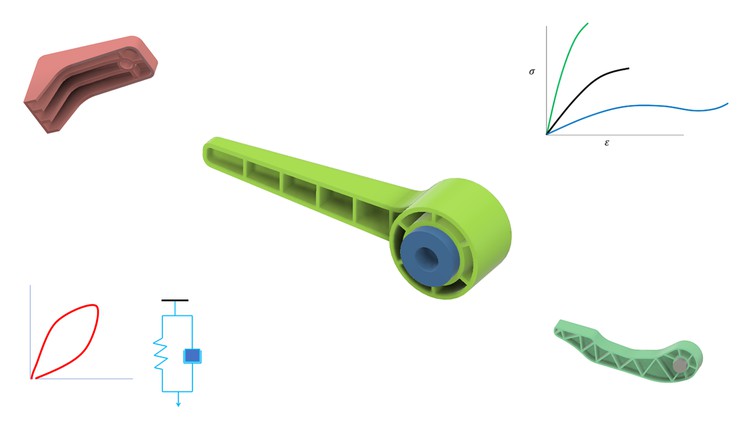Learn the basics of plastic design for design engineers
When using plastics in the design process, become familiar with the principles of mechanical design.
What you’ll learn
Learn the basics of plastic design for design engineers
- What kinds of plastic are there, and why are they useful?
- Plastics’ mechanical behavior
- Viscoelastic behavior and creep phenomena
- Plastics’ wear, impact, and hardness characteristics
- Reinforced plastics are what?
- The criteria, considerations, and design process
Requirements
- Basic understanding of plastics.
- Background information on material strength
Description
The class of materials known as plastics has seen extensive application in product design.
Plastic is often more difficult to design with than steel or aluminum. Given that material qualities vary under a variety of conditions,
The goal of this course is to collect the most important things to think about when making things with plastic.
topics covered
- What distinguishes plastics from polymers?
- The Difference Between Thermosets and Thermoset Plastics
- The Difference Between Crystalline and Amorphous Materials
- The benefits and drawbacks of plastic use in design
- The significance of data and testing—Design strategy
- A stress-strain diagram for mechanical behavior.
- Brittle vs. ductile behavior.
- behavior that is both linear and nonlinear.
- lengthening as well as the yield point.
- The glass transition temperature’s importance
- Models for the viscoelastic behavior
- How the Creep Phenomenon Occurs
- Twelve explanations of creep rupture
- Steel vs non-steel material behavior for fatigue and fracture toughness.
- Impact resistance: which polymers perform better than others?
- The hardness quality, how it’s measured, and why it matters
- Friction and abrasion characteristics Good plastics to choose for anti-friction applications
- What are reinforced plastics, precisely? Their strength and anisotropies
- Integrating plastics manufacturing into a larger design process
- Checks to include, steps to think about
- Guidelines for selecting materials and factors to consider
- Dimensional tolerances and stability
- Design of Injection Molding
This course is designed to help design engineers with the plastic-based product design process. To make better choices about materials and designs, you need to go beyond CAD skills and learn a lot about how plastics behave.
Who this course is for:
- Design engineers with the confidence and essential knowledge to confidently design with plastics.
- Aspiring engineers










